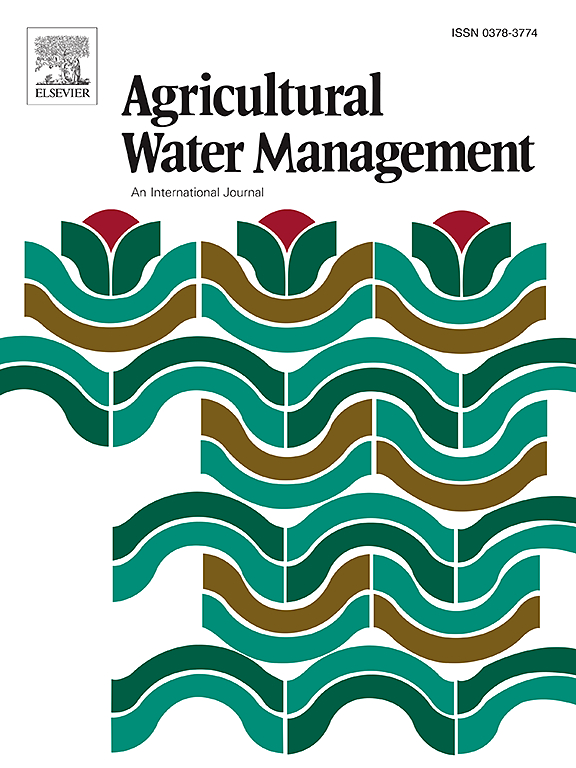Comparing evapotranspiration estimations using crop model-data fusion and satellite data-based models with lysimetric observations: Implications for irrigation scheduling
IF 5.9
1区 农林科学
Q1 AGRONOMY
引用次数: 0
Abstract
Irrigation scheduling relies on accurately estimating actual evapotranspiration (ETa). However, achieving this goal remains challenging, with current trends attempting to integrate sensor data into biophysically-sound models. In this study, we used ETa models that integrate satellite-derived data. Model outputs were compared with weighing lysimeter measurements collected at Bushland, Texas, focusing on the uncertainties associated with model estimations and lysimetric observations of ETa. The data were for maize (Zea mays L) during the seasons 2013, 2016, and 2018, irrigated using a linear-move system applying 100 % and 75 % of ETa, and a subsurface drip irrigation system applying 100 % ETa. The models were CropSyst-W, a crop model integrating the normalized difference vegetation index to derive green canopy cover, and two remote sensing data-based energy balance models: EEFlux and OpenET. The average Willmott index of agreement (d, 0 = no agreement, 1 = perfect agreement) of 3 years and four lysimeters were 0.93 and 0.77 for CropSyst-W and EEFlux, respectively. OpenET estimates were only available in 2016 and 2018, with an average d of 0.89. The average normalized root mean square deviation was 0.31 and 0.47 for CropSyst-W and EEFlux and 0.32 for OpenET. Uncertainty factors affecting modeled and observed ETa highlight the difficulty in defining model accuracy for adaptive irrigation scheduling, which is also affected by the spatial variability of ETa and irrigation uniformity. Research on pathways for model improvement should continue, searching for practical solutions that integrate models and sensors and account for the limitations discussed here.
求助全文
约1分钟内获得全文
求助全文
来源期刊

Agricultural Water Management
农林科学-农艺学
CiteScore
12.10
自引率
14.90%
发文量
648
审稿时长
4.9 months
期刊介绍:
Agricultural Water Management publishes papers of international significance relating to the science, economics, and policy of agricultural water management. In all cases, manuscripts must address implications and provide insight regarding agricultural water management.
 求助内容:
求助内容: 应助结果提醒方式:
应助结果提醒方式:


